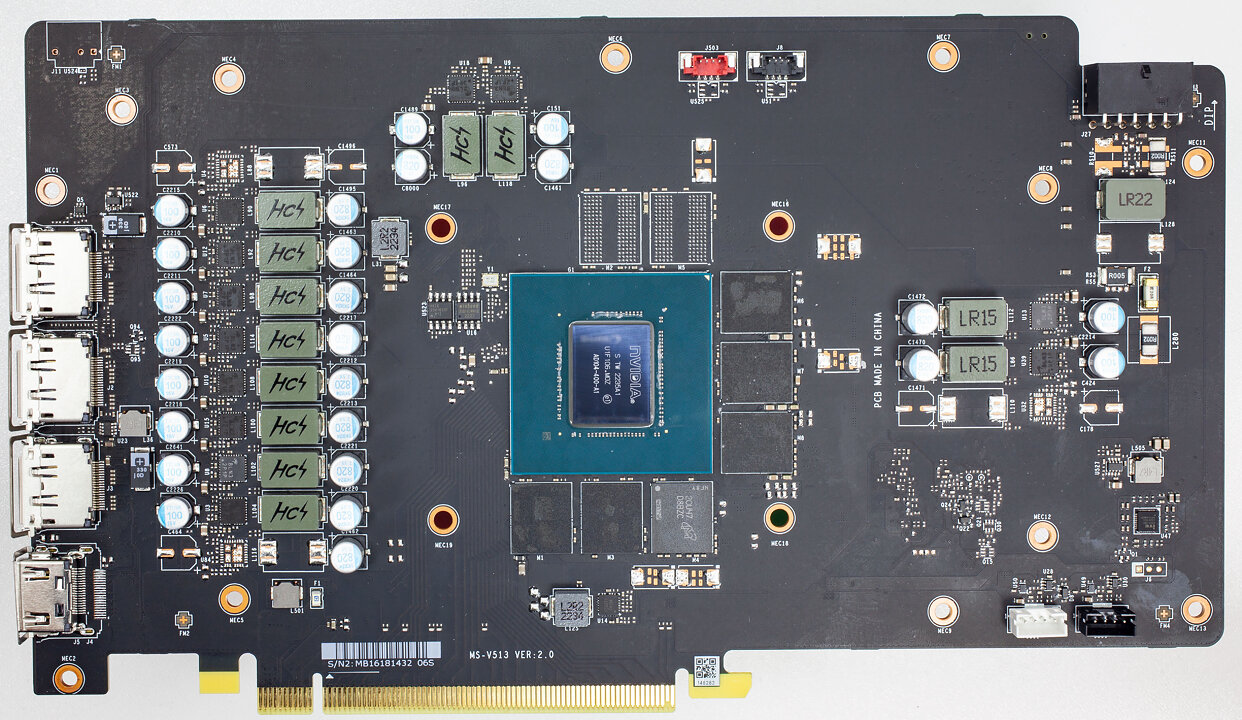If the HBM models were not appreciated in public why should AMD bother? Same with Polaris, it was meant for cheap mass market product, but didn't get the love from reviewer or internet. Because of that we don't have cheap video cards now.
That may be true, but I would have loved this HBM + compact card trend to continue.
HBM3 is a great memory, so people like me or you are wondering why It's not used more.
Is It really so expensive?
4 years ago AMD released Radeon VII with 4 stacks of 16GB HBM2 1TB/s for $699. One stack is 4GB and 256GB/s.
Is a single 16GB HBM3 stack today costlier than 4 back then? Hardly.
I will try to calculate production cost for GPUs, defect density is 0.053/sq.cm and I ignore the faulty ones.
Wafer prices are 7nm at that time $8000, 5nm currently $15000, 6nm currently $7000.
Radeon VII is 331mm2 -> 139 good dies. 8000/139= $57.5, with packaging maybe $85.
MCD is 37mm2 -> 1547 good dies. 7000/1547 = ~ $4.5
N31 GCD is 300mm2 -> 160 good dies. 15000/160 = $94 + 6*$4.5 = $121, with packaging maybe $155.
N32 GCD is 200mm2 -> 251 good dies. 15000/251 = $60 + 4*$4.5 = $78, with packaging maybe $100.
N33 monolith 204mm2 -> 250 dies. 7000/250 = $28, with packaging maybe $40.
I found this, but it's >10 years old. AMD asked 23-27% of the MSRP.
HD 6970 is 389mm2 at 40nm and has 113 good dies. Cost was at that time what? I found $2274 but If It's correct I don't know. 2274/113=$20+$5 packaging, maybe.
AMD asked $85 and that is 240% more. If I apply the same to these chips, It would look like this. GDDR6 is $20 per 2GB GDDR6 module included in BOM.
| MSRP | Chip cost | Historical price for manufacturers
340% of die cost or (23-27% of MSRP) | BOM | What's left |
| Radeon VII | $699 | $85 (HBM2 is missing) | $289 or ($161-189) (HBM2: + $240) | $70 | $100 or ($200-228) |
| RX 7900 XTX | $999 | $155 | $527 or ($230-270) | $330 | $142 or ($399-439) |
| RX 7800 XT | $749 | $100 | $340 or ($172-202) | $240 | $169 or ($307-337) |
| RX 7600 XT | $449 | $40 | $136 or ($103-121) | $150 | $163 or ($178-196) |
The first option based on die cost is wrong today. The second one looks more believable, but realistically It should be more than 23-27% of the MRSP.
I will change It to 8% shop, 2% shipping, 20% manufacturer margin, you will be left with 70% of MRSP for BOM and AMD.
Radeon VII: $489 - $70 = $419 (60% of MRSP without HBM2 cost you are left with $179 so 2.1x higher price than die cost)
RX 7900 XTX: $699 - $330 = $369 (37% of MRSP, 2.4x higher price than die cost)
RX 7800 XT: $524 - $240 = $284 (38% of MRSP; 2.8x higher price than die cost)
RX 7600 XT: $314 - $150 = $164 (36.5% of MRSP; 4.1x higher price than die cost)
This price is what AMD can ask for these chips.
What does this have to do with HBM? Not much.

Now back to HBM3, finally.

Let's say a single 16GB HBM3 stack costs $80.
Let's keep the price for GDDR6 at $20 and add memory cost to chip cost.
RX 7900 XTX: 12*$20 + $155 =
$395
RX 7800 XT: 6*$20 + $100 =
$220
RX 7600 XT: 4*$20 +$40 =
$120
So HBM3 needs to be cheaper than above-mentioned prices, realistically you would also save something on a smaller GCD die or monolith, but I will ignore It now.
Let's say 1x stack of 16GB HBM3 costs $80, packaging $20 instead of $12 I used for N33. Production cost is $28+$20+$80 =
$128.
Let's say 2x stacks of 16GB HBM3 costs $160, packaging $22 instead of $22 I used for N32. Production cost is $60+$22+$160 =
$242.
Let's say 3x stacks of 16GB HBM3 costs $240, packaging $25 instead of $34 I used for N31. Production cost is $94+$25+$240 =
$359.
I will subtract GDDR6 memory from BOM and what's left is what can AMD ask for chip+HBM3.
RX 7900 XTX: $699 - $90 = $609 (61% of MRSP)
RX 7800 XT: $524 - $80 = $444 (59% of MRSP)
RX 7600 XT: $314 - $70 = $244 (54% of MRSP)
Production cost is higher for N32 and N33 with HBM3, for N31 It's actually smaller. This is actually not bad, not bad at all.
As a compensation, you would save some power by using HBM3, there is still the smaller N31,N32, N33 die by getting rid of interconnect and IC.
You have 16GB, 32GB and 48GB HBM3 Vram + a lot higher Bandwidth.
N33: 819GB/s vs 320GB/s (128bit 20gbps GDDR6)
N32: 1638GB/s vs 640GB/s (256bit 20gbps GDDR6)
N31: 2457GB/s vs GB/s 960GB/s (384bit 20gbps GDDR6)
With this is mind, those chips should perform better and have more Vram, so you can simply increase the MRSP by $50-75-100, which is 10-11% more per card.
You end up with higher profit(margin), or It will compensate for HBM3 If it costs more than $80 per stack.












